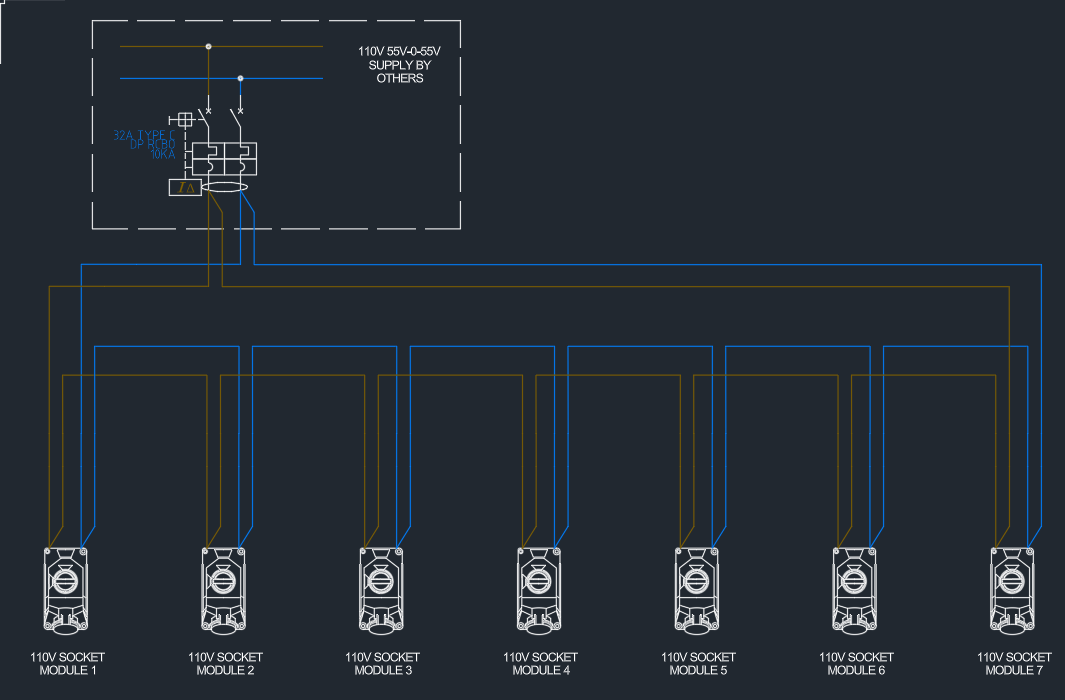I am planning to make a 110v circuit containing up to 10 x 16A 110V single sockets. The circuit is up to 100m long. Is 32A MCB type C and H07 4mm2 will be ok for it or I need to take into consideration of using RCBO instead and calculate voltage drop to size required cable properly?
